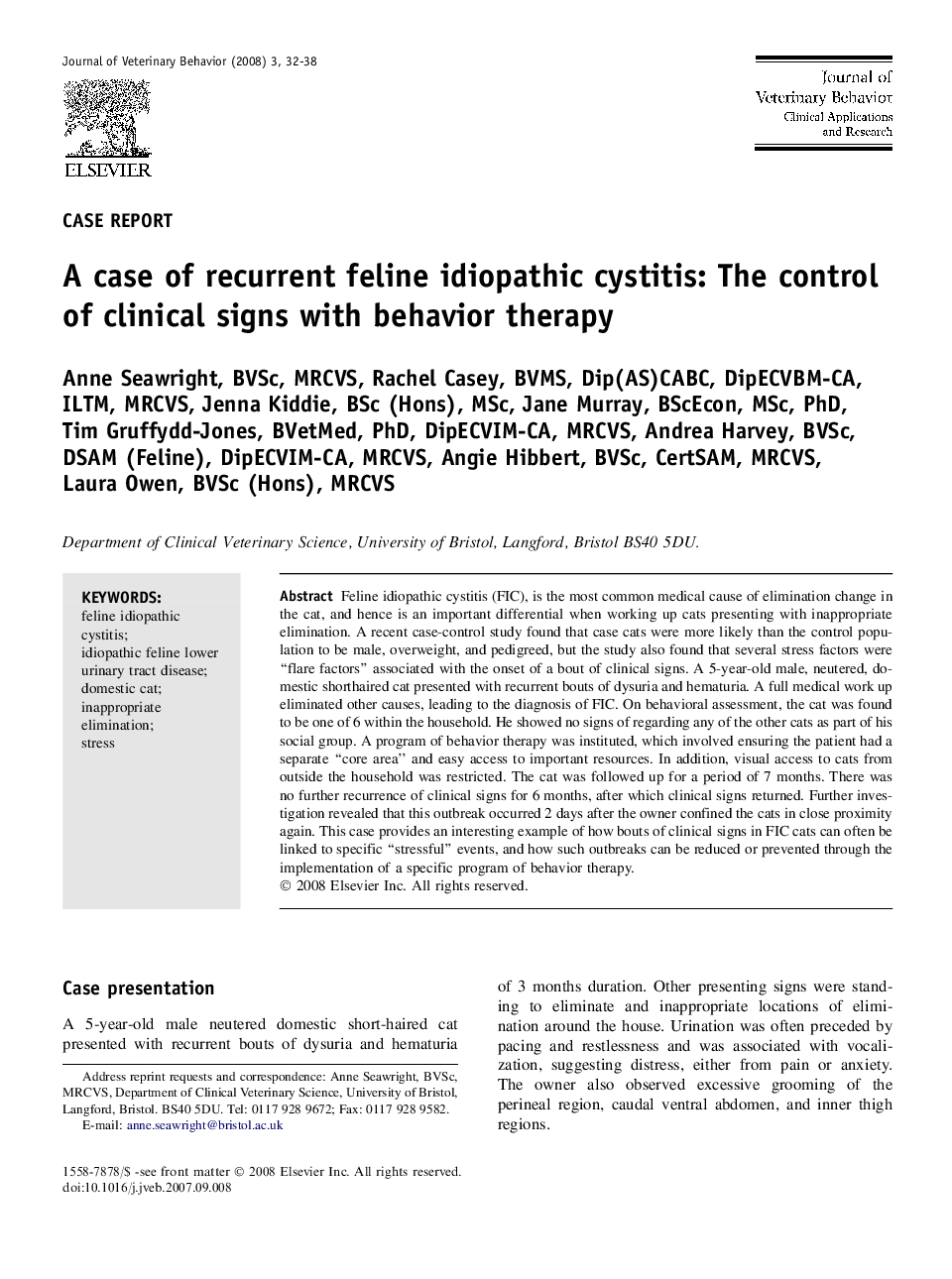| Article ID | Journal | Published Year | Pages | File Type |
|---|---|---|---|---|
| 2399588 | Journal of Veterinary Behavior: Clinical Applications and Research | 2008 | 7 Pages |
Feline idiopathic cystitis (FIC), is the most common medical cause of elimination change in the cat, and hence is an important differential when working up cats presenting with inappropriate elimination. A recent case-control study found that case cats were more likely than the control population to be male, overweight, and pedigreed, but the study also found that several stress factors were “flare factors” associated with the onset of a bout of clinical signs. A 5-year-old male, neutered, domestic shorthaired cat presented with recurrent bouts of dysuria and hematuria. A full medical work up eliminated other causes, leading to the diagnosis of FIC. On behavioral assessment, the cat was found to be one of 6 within the household. He showed no signs of regarding any of the other cats as part of his social group. A program of behavior therapy was instituted, which involved ensuring the patient had a separate “core area” and easy access to important resources. In addition, visual access to cats from outside the household was restricted. The cat was followed up for a period of 7 months. There was no further recurrence of clinical signs for 6 months, after which clinical signs returned. Further investigation revealed that this outbreak occurred 2 days after the owner confined the cats in close proximity again. This case provides an interesting example of how bouts of clinical signs in FIC cats can often be linked to specific “stressful” events, and how such outbreaks can be reduced or prevented through the implementation of a specific program of behavior therapy.
